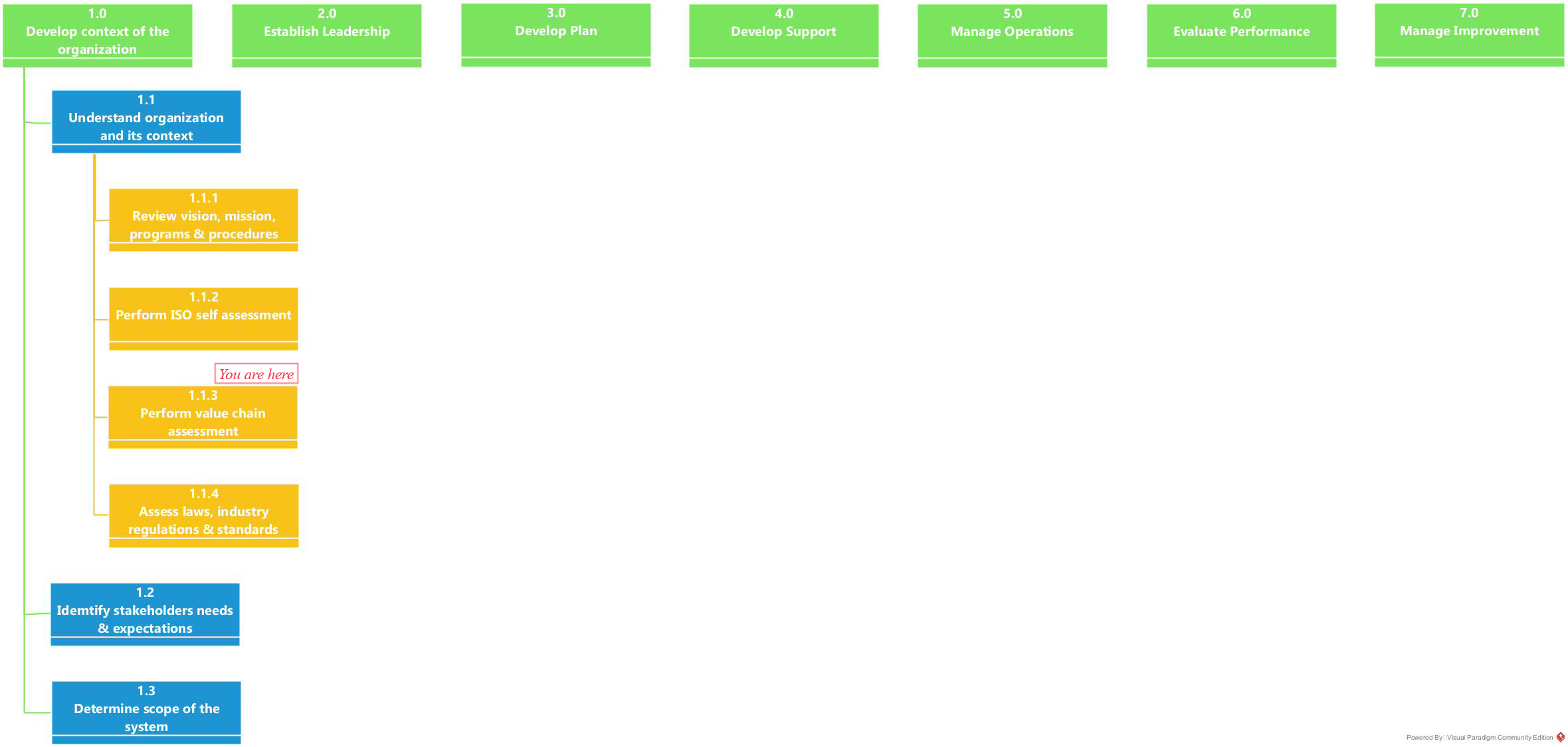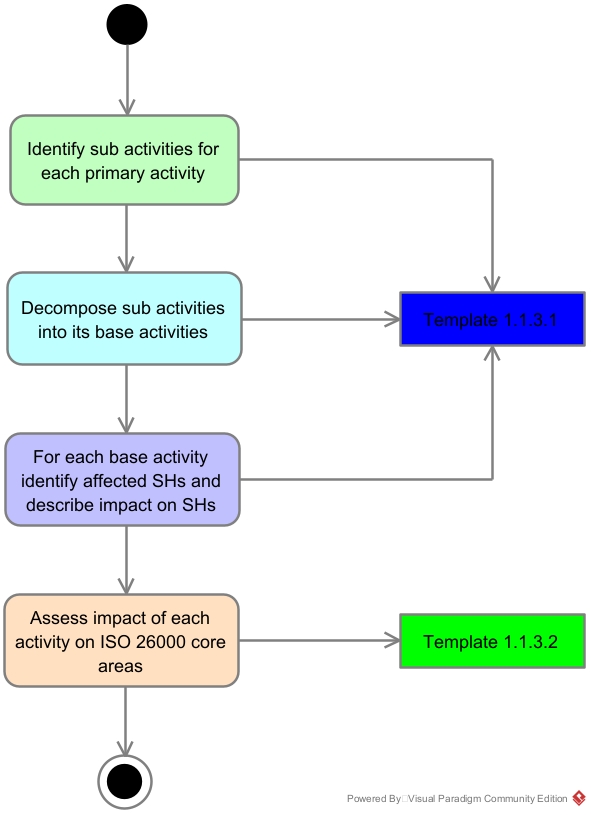

| Description :: |
|
Organizational social and environmental impact is an outcome of organizational actions and activities. Hence, a careful and systematic assessment of the impact of organizational activities is required. This tool consists of two parts. Part A concerns identifying the value chain activities and Part B concerns assessing the impact of the value chain activities across ISO 26000 core areas.
What is a Value Chain?
Value chain refers to the entire set of activities company’s engages in to create its products and services and make them available to end consumers. This includes all sets of activities that fall in between these processes such as procurement of raw materials, production of goods, and storage and distribution. Value chains are not just limited to individual companies. It can be extended to include a company’s suppliers and their suppliers as well. The concept of Value chain was first developed by Harvard Prof. Michael E. Porter in his book Competitive Advantage: Creating and Sustaining Superior Performance. According to Porters model of Value Chain, all the activities of a firm can be categorized into following categories: Primary activities – concerned with the physical production, distribution, sale, delivery, maintenance and support of products and services. It is composed of following sets of activities:
1) Inbound logistics – refers to flow of inputs into the organization from external suppliers. This could be raw materials and parts and components. It is composed of activities such s receiving, warehousing, inventory management etc.
Secondary activities – concerned with enabling and making the primary activities more efficient and effective. These activities are not directly associated with production and distribution of goods and services but nonetheless provide a vital support service to the primary activities. These activities are in turn divided into following categories:
6) Procurement – concerned with purchase of raw materials and parts and components to make the finished products and services. It consists of activities such as suppliers selection, negotiating and contracting, receipt and inspection of goods, supplier relationship management etc. Why analyze the value chain? Value Chain analysis helps firms identify activities within their value chain that are inefficient i.e. adding more costs than adding value. These activities can than be optimized to create more value. A careful analysis of a firm’s value chain may highlight areas of competitive advantage for the firm. It enables a clear understanding of linkages and dependencies between activities. This can offer immense insight into the workings of the firm and can be a source of major innovations and efficiency. In context of this exercise, value chain analysis will reveal the social and environmental impact of the various organizational activities. |
| Objectives :: |
|
| Methodology :: |
 |
| Template 1.1.3.1 | Template 1.1.3.2 |
